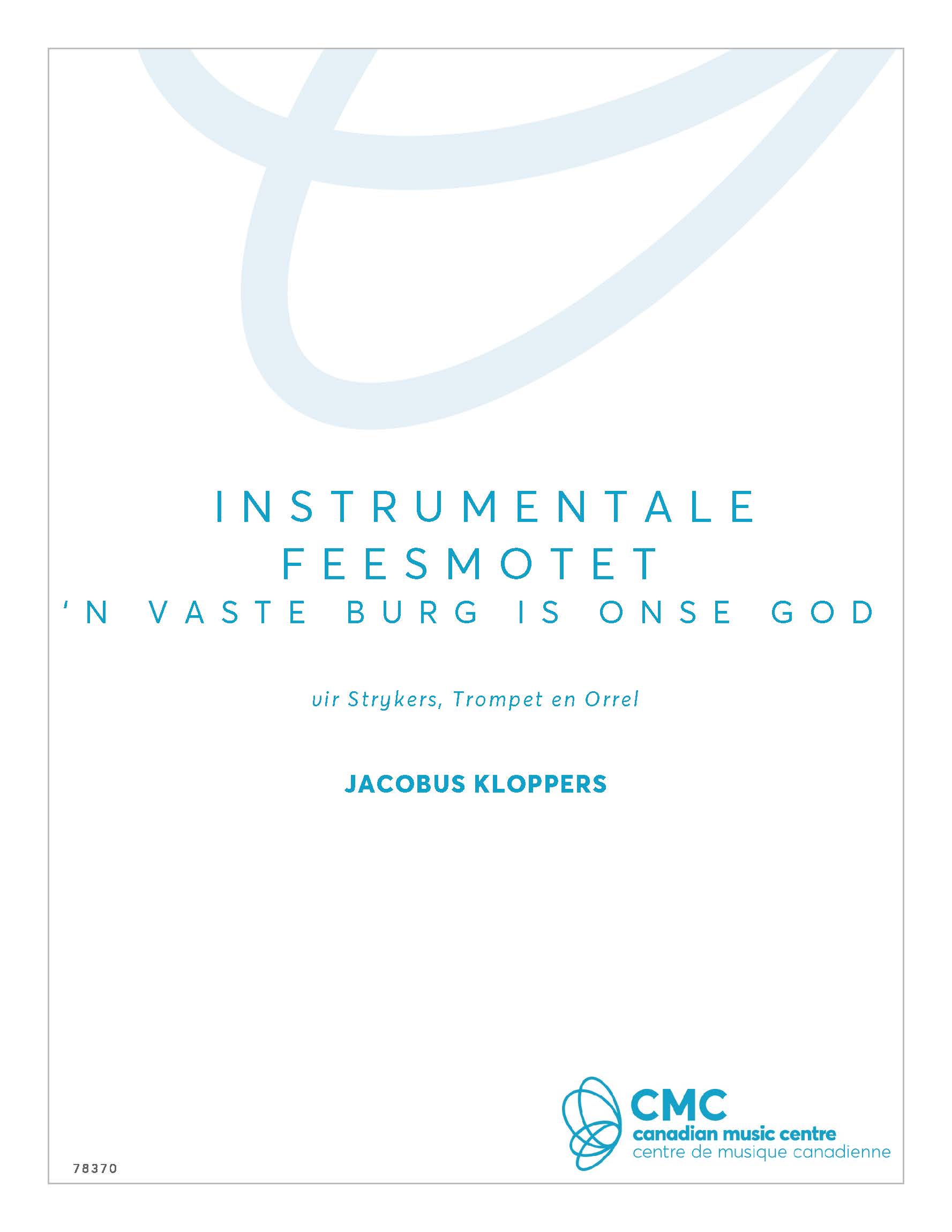NOTES BY COMPOSER Purpose and history: The work started as ‘Jack and the Bean Stalk’ for Narrator and Organ in 1995. Its purpose was to introduce young children to the specific sound possibilities of the pipe organ in an entertaining way, using the well-known English fairy tale Jack and the Bean Stalk as story line. This 1995 Narrator/Organ version was commissioned by the Royal Canadian College of Organists for organist Ms. Tammy-Jo Mortensen of Edmonton AB, who had suggested the project. The well-known fairy tale Jack and the Bean Stalk, which had been adapted in various versions in the past, was adapted again for this purpose. Though I made some changes to the original story for a 20th/ 21st century young crowd, I tried to preserve something of the spirit (freshness, innocence, simplicity and language) of the folk tale and not to modernize it through the use of modern cartoon language, styles or gestures. In this Narrator-Organ version it has been performed in Canada by Ms Mortensen and narrator Timothy Anderson (Edmonton, Montreal, Ottawa and Windsor). It also enjoyed performances in Edmonton (by Dr. Marnie Giesbrecht, organ) as well as in Delft, The Netherlands and in Bloemfontein South Africa (Leonore Kloppers, organ). Following the performance by Timothy Anderson (Narrator/Singer) and Tammy-Jo Mortensen (Organ), in the Windspear Centre for Performing Arts in Edmonton on May 8, 2004 as part of the Edmonton Symphony Educational ‘Symphony for Kids’ series, a member of the Edmonton Symphony suggested that I orchestrate the work as well. This has stayed with me until late 2020 when I decided to start with the orchestration. For a variety of reasons I decided to retain the organ in the orchestration: There are organ sounds, which are unique and cannot be replicated by the orchestra, such as the Mixtures, Cymbals Celeste or the Sesquialtera. A further advantage is the tonal range of the organ, which exceeds that of orchestral instruments.Yet, the orchestra has its own beautiful and unique sounds to contribute. Combining these mediums produces a much richer sound pallet. In preparing the 2021 orchestral version I did some revision of the original and added around 60 measures of music, mostly creating background to some of the narration. Music and storyline: The instruments illustrate the story through themes and modalities associated with the characters and actions in the story. The fairy tale is a long one, which poses certain structural challenges. Instead of creating a mosaic of constantly new themes, I aspired to give the work a motivic and modal unity: The human world is depicted in a diatonic-chromatic mode; the world of the magician, the magic beans, bean stalk and the giant, in a phrygian mode. The character of Jack traverses the two worlds. The character themes reappear but become transformed as the unfolding events require. Performance: Similar to opera, the orchestra part is very flexible and will be cued in by the conductor. The pipe organ used should have the necessary resources (diversity of manuals and stops indicated in the score) to render the necessary dynamic and timbre effects. Registration indications are there to suggest timbre and texture. On large organs use could be made of the greater resources available (i.e. 32′ stops for the Giant). The narration plays a key role in the performance. The challenge is to captivate a young audience and to appeal to their imagination through dramatic reading. The narrator is foremost an expert reader with a sense for the dramatic but should have enough musical insight to sing the theme songs and read music in order to synchronize gestures with the music. He/she should not act out the events, but rely on tone of voice, subtle facial expressions and gestures to suggest the actions, moods, or characters, keeping eye contact with the audience as much as possible. The text does not require memorization. Sound amplification is to be kept to a level required for clarity and balance with the organ and orchestra. Narration and musical illustration are either simultaneous or alternate. Where they are simultaneous, an asterisk (*) in the narration text indicates the start of the music, i.e. in the little songs associated with Jack, Jack’s Mom, Milky White, Rusty, Magician, Giant, Giant’s Wife, Hen, and Magic Harp, and in the various instances required for dramatic effect. Timing and quick coordination between narrator, orchestra and organist are essential to keep the storyline moving. When singing the themes, the narrator should imitate the gesture of the music in rhythm and pitch, except for the rather chromatic Jack theme, where perfect intonation is not essential. Acknowledgements: I wish to thank Tammy-Jo Mortensen for the 1995 initiative for such a fairy tale work for organ and narrator, also for the exchange of ideas concerning the nature of the work and securing an underwriter for the project The Royal Canadian College of Organists for underwriting the 1995 commission; My 1995 colleagues from The King’s College (now, The King’s University), Dr. Leslie-Ann Hales, Ms. Simona Maaskant and Dr. Joachim Segger for valuable input regarding the text My son Martin and daughter Elsabé for suggestions and critique concerning the text; My wife Miensie, who, as an elementary art teacher greatly contributed to the final 1997 text revision and for providing colourful decor and props for the many Edmonton performances. Scott Whetham, Principal Tubist of the Edmonton Symphony, for suggesting orchestration of the work My colleague, Trent Worthington, for converting the 1995 manuscript into digital format in 2011 as well as digitally transcribing the orchestral version from manuscript in 2021
– Jacobus Kloppers, Edmonton AB 2021

